Syn.: Lithospermum euchromon Royle, Macrotomia euchromon Paulsen
Family: Boraginaceae Juss.
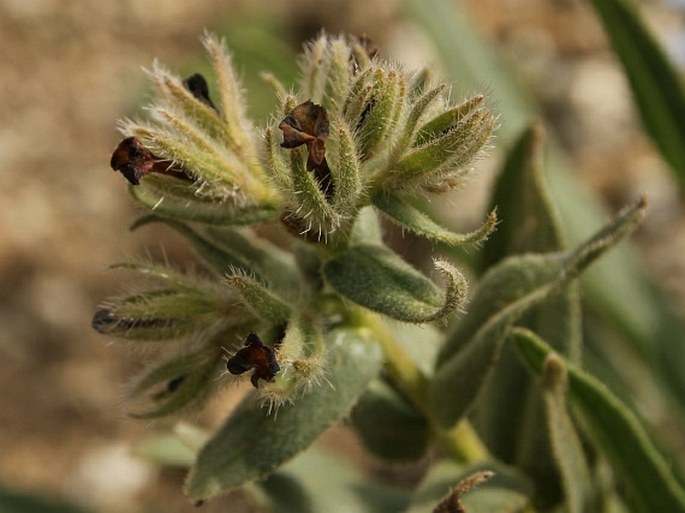
Distribution: Species of the Central Asian mountains – from Nepal, northwestern India, Pakistan and Iran through western Tibet, Turkmenistan and Uzbekistan to Kazakhstan, Kyrgyzstan and Chinese province of Xinjiang. The species is variable throughout its distributional range.
Ecology: It grows in rocky slopes, rocks, meadows, at elevations from 3300 to 4800 m in the Himalaya. Blooms from June to August.
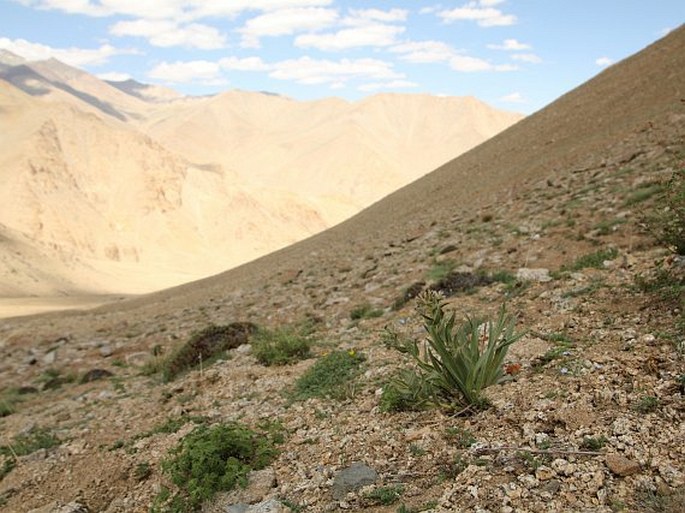
Description: Perennial herb with stout roots. Stems usually 1 or 2, erect, branched above, 15–40 cm tall, hirsute. Basal leaves sessile, lanceolate to linear-lanceolate, 7–20 × 0.5–1.5 cm, sparsely hirsute; stem leaves lanceolate to linear-lanceolate, smaller. Cymes terminal, many flowered; bracts lanceolate; calyx lobes linear, 1.2–1.6 cm, to 3 cm in fruit, densely hirsute on both sides; corolla dark purple, sometimes pale yellow and purple-red tinged, tubular-campanulate, glabrous or sparsely short pubescent outside; tube straight, 10–17 mm; limb 6–15 mm wide. Nutlets black-brown, broadly ovate.
Usage: The roots are used medicinally.
Note: The genus Arnebia contains about 25 species, which occur in Europe, northern Africa, central and southwestern Asia.
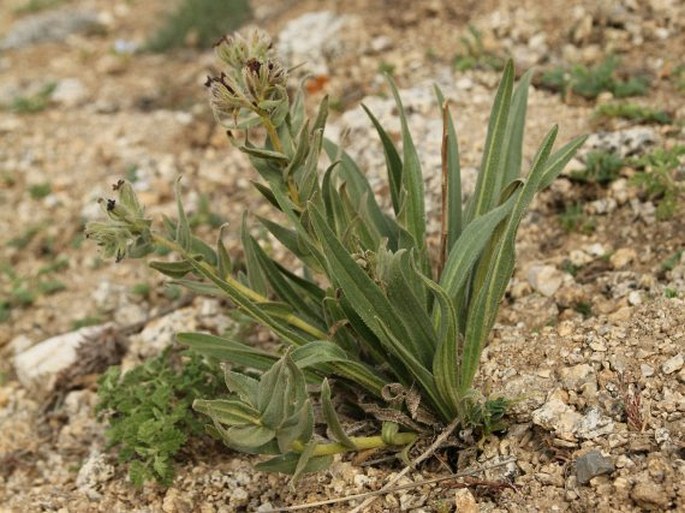
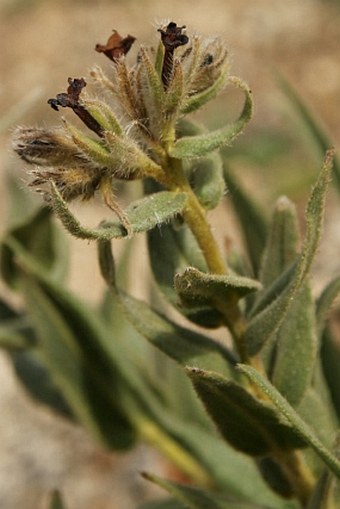
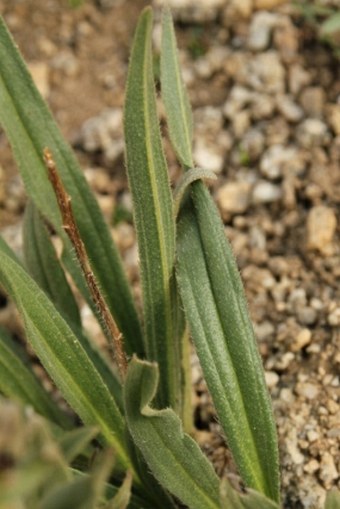
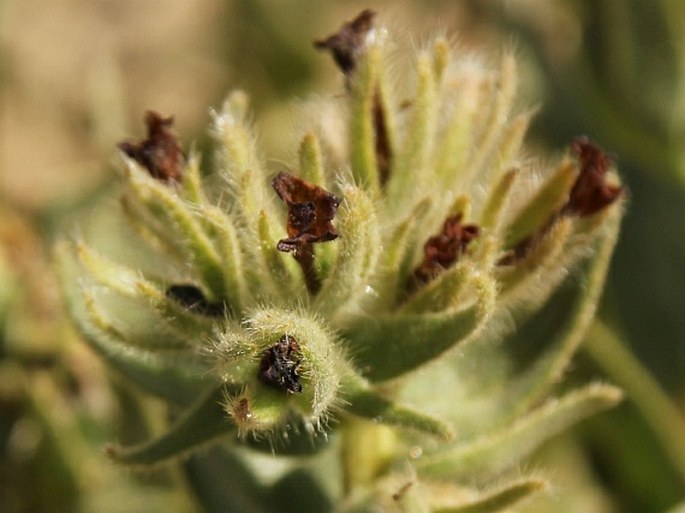
These images were taken in India, Ladakh, Murabak La (by Jindřich Houska, July 18, 2013).


